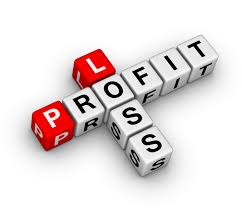How To Solve Sums On Profit-Loss-Marked Price and Successive Discounts-For WBCS Exam.
লাভের পরিমাণ কীভাবে সমাধান করবেন – লোকসান – চিহ্নিত মূল্য এবং ক্রমাগত ছাড় – WBCS পরীক্ষার জন্য।
Mathematics is one of the most scoring portion in the W.B.C.S Examination. Learning Mathematics is always fun. Right strategy and thorough practice is the key to crack Mathematics paper , be it prelims or mains.What is Discount?Continue Reading How To Solve Sums On Profit-Loss-Marked Price and Successive Discounts-For WBCS Exam
Suppose a Music CD has price tag of Rs.100 and the shopkeeper is offering 20% discount.
That means 20% less on the price tag.
The price you’ve to pay
=Rs.100 minus 20% of 100
=100-(20×100/100)
=100-20
=Rs. 80 you’ve to pay, to buy that music CD.
20 percent discount means you’ve to pay 100 percent minus 20 percent=80 percent of the price tag.
% means one upon hundred (1/100)
So 80% means (80/100=0.8)
So you’ve to pay 0.8 times the original price.
=0.8 x 100
=Rs. 80
What is successive discount?
The Syllabus of W.B.C.S Examination is huge and Maths and Reasoning is an integral part of it.So, lets get back to successive discounts.It means discount on the discount. (just like Compound Interest rate= interest on interest)
The original price of a music CD is Rs.100. A shopkeeper offers 10% discount on this music CD and then again offers 20% discount on the new price. How much will you have to pay, finally?
Phase I: 10% discount
So new price = 0.9 x original price. (by the way, how did we get 0.9 ? well 10% discount means you’ve to pay 90%. And 90% means 0.9.
Phase II: 20% discount
=0.8 x new price
=0.8 x 0.9 x original price.
It means, after successive discount of 10% and 20%, the final price you’ve to pay
=0.72 x original price.
=0.72 x 100
=Rs.72
If it was successive discount of 20% and then 10%? Still answer will remain same.
Let’s test our skill with an actual question,
Q1. A dealer buys a table listed at Rs.1,500 and gets successive discounts of 20% and 10%. He spends Rs.20 on transportation and sells it at a profit of 20%. The selling price of the table is
- Rs.1,320
- Rs.1,350
- Rs.1,360
- Rs.1,380
SOLUTION-
20% discount =0.8 x original price (this is our new price)
10% successive discount= 0.9 x New price=0.9 x 0.8 x original price
Finally dealer had to pay: 0.72 x original price.
Then he invested Rs.20 on transport, so his total investment (cost price) is
(0.72 x original price) + Rs.20
And ultimately he sold It @20% profit.
20% profit means 100%+20%=120%
=1.2 times the investment (cost price).
=1.2 times [(0.72 x original price) + Rs.20]
=1.2 times [(0.72 x 1500) + Rs.20]
=1.2 [1080+20] =1.2 [1100] =Rs. 1320
Case: Successive vs One Time Discount?
Q. Jethalal, has a mobile phone with price tag Rs.12,399/-. He is offering two schemes to you
- Buy it at one time discount of 30%
- Buy it at two successive discounts of 15% and 15%
Which of the above scheme is more beneficial to you (customer)?
Long method
| Scheme A | Sheme B |
| Discount offered =30% of 12,399 =0.3 x 12,399 =3719.7 |
Phase I 15% of 12399 =1859.85 Rs. (discount I) So new price : 12399 MINUS 1859.85=10539.15 Phase II: (second discount) =15% of 10539.15 =0.15 x 10539.15 =1580.8725 (discount II) Total discount =1859.85 +1580.8725 =3440.7225 |
We are getting more discount in Scheme A compared to Scheme B.
So, from customer’s point of view, Scheme A is more beneficial.
Short method
| Scheme A | Scheme B |
| Discount offered=30% Final price you’ve to pay =0.7 times original price. |
Successive discount 15% (two times) Final price you’ve to pay =0.85 x 0.85 x original price =0.7225 x original price |
In Scheme A, you’ve to pay less price compared to Scheme B. Because 0.7 < 0.7225
So, from customer’s point of view, Scheme A is more beneficial.Solving Previous years question papers is a must while preparing for the maths and reasoning paper.
Our own publications are available at our webstore (click here).
For Guidance of WBCS (Exe.) Etc. Preliminary , Main Exam and Interview, Study Mat, Mock Test, Guided by WBCS Gr A Officers , Online and Classroom, Call 9674493673, or mail us at – mailus@wbcsmadeeasy.in
Please subscribe here to get all future updates on this post/page/category/website



 Toll Free 1800 572 9282
Toll Free 1800 572 9282  mailus@wbcsmadeeasy.in
mailus@wbcsmadeeasy.in


















































































































